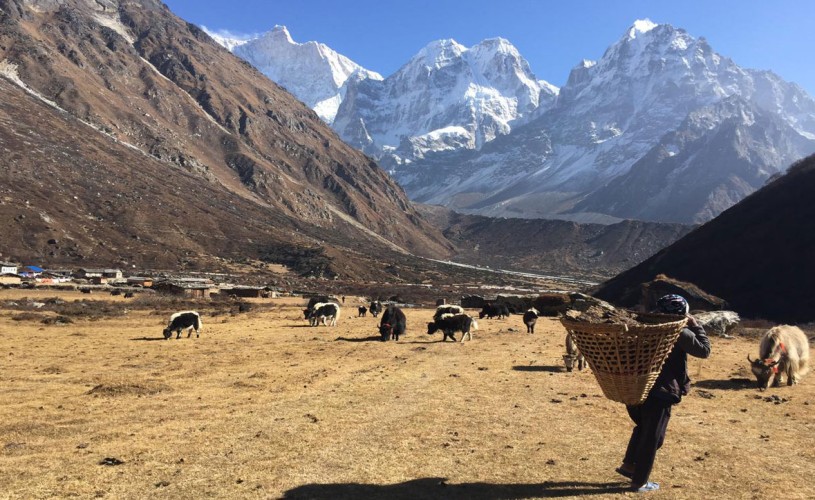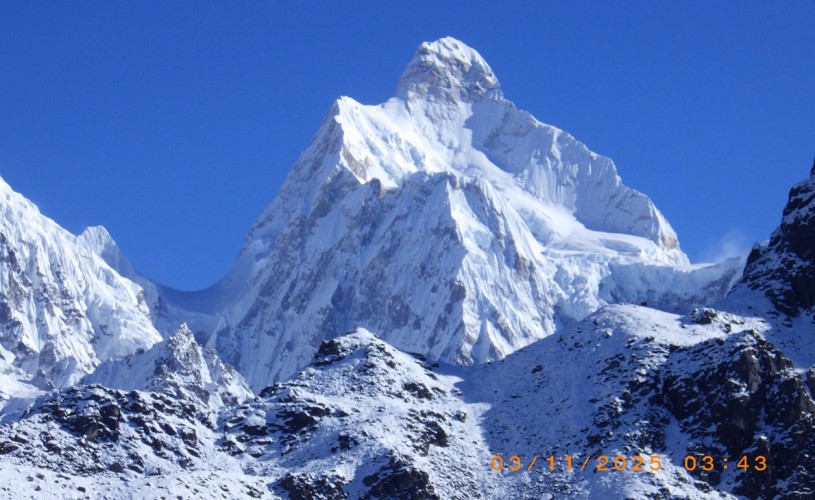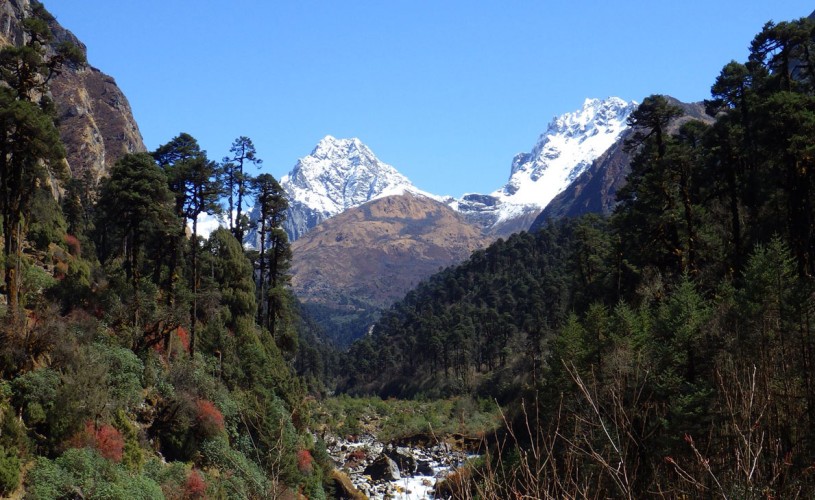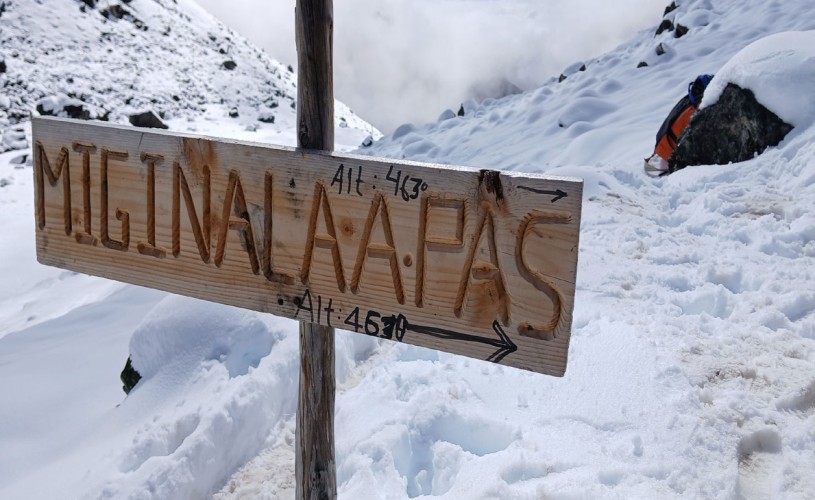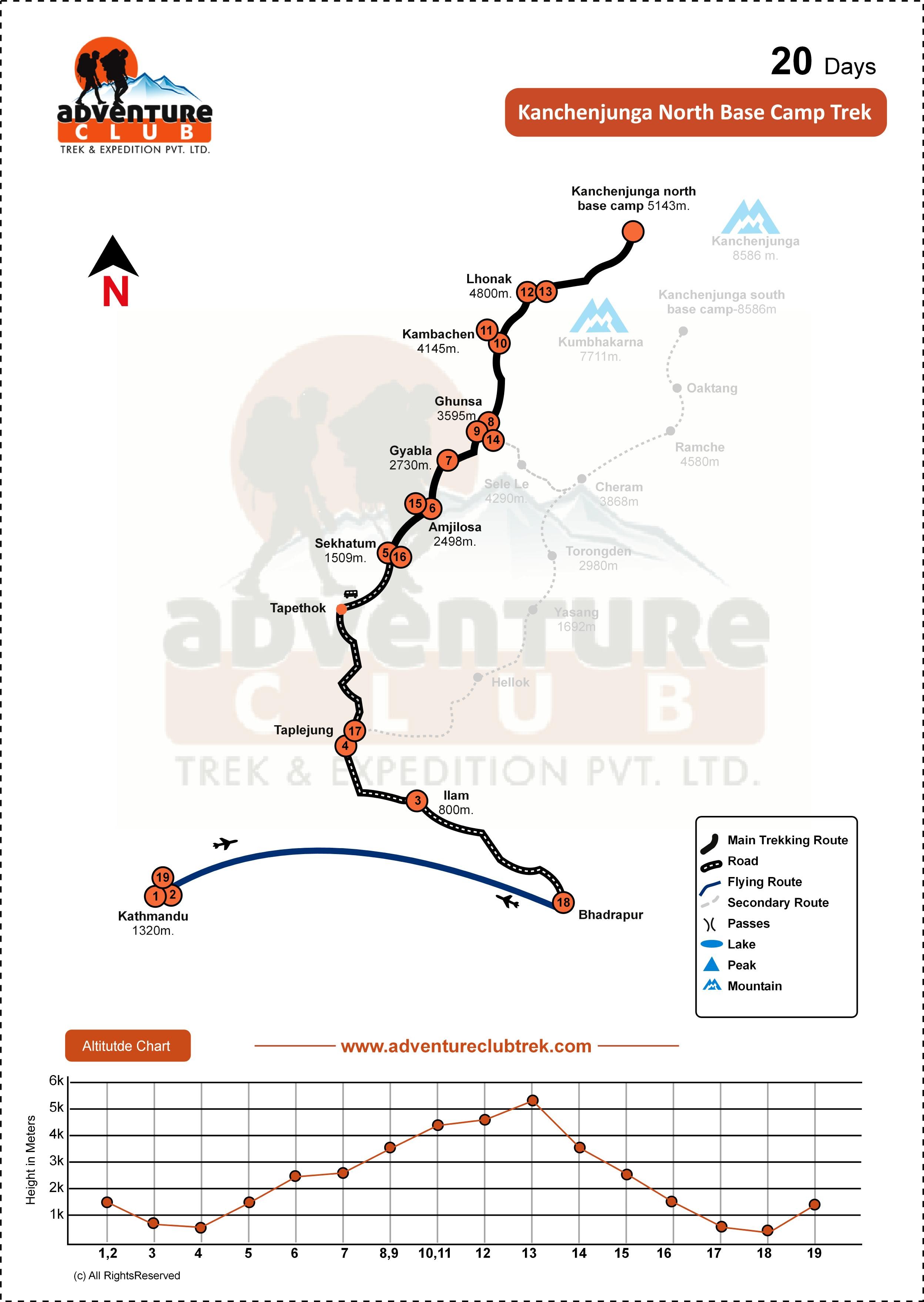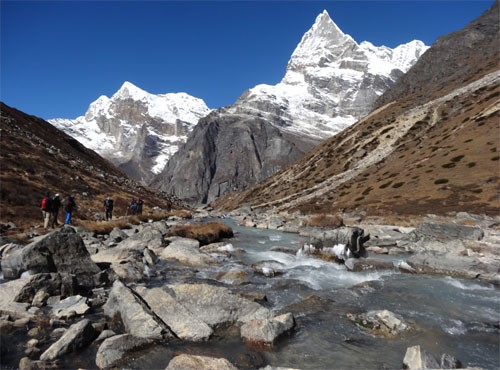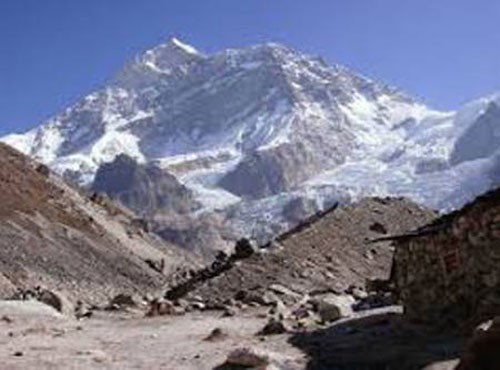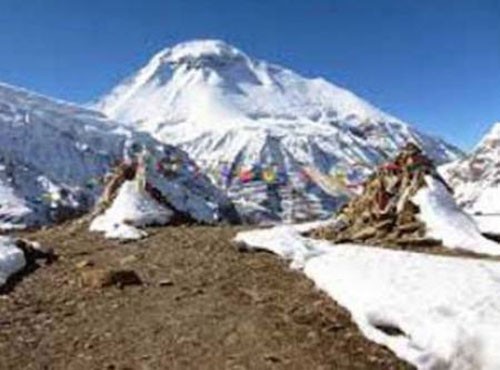Kanchenjunga North Base Camp Highlights:
Enjoy a scenic flight to eastern Nepal with views of Mt. Everest.
Drive through Nepal’s winding mountain highways.
Reach the remote Kanchenjunga region, home to the world’s third-highest peak.
Explore the rich biodiversity of the Kanchenjunga Conservation Area.
Visit both the North and South Base Camps of Mt. Kanchenjunga.
Soak in stunning views of Kanchenjunga, Mt. Jannu, and Mera Peak.
Cross suspension bridges and high passes, and visit remote monasteries.
Challenge yourself on one of Nepal’s most rewarding off-the-beaten treks.
Kanchenjunga North Base Camp Trek: Best Itinerary & Cost 2026
The Kanchenjunga North Base Camp Trek is a 21-day remote Himalayan journey to Pangpema (5,143 m), the northern base camp of Mount Kanchenjunga—the world’s third-highest peak. Far from the busy trails of Everest or Annapurna, this off-the-grid adventure winds through one of Nepal’s least-traveled regions, offering raw mountain beauty, cultural depth, and a deep sense of solitude.
Though opened to trekkers in 1988, the Kanchenjunga region has remained an unspoiled Himalayan region, offering true off-the-beaten-path trekking adventures. This route traverses a remarkable range of landscapes that showcase the natural and cultural richness of eastern Nepal.
Your journey starts with a short flight from Kathmandu to Bhadrapur, then continues with a beautiful drive through the hills to Taplejung or Ilam—peaceful towns that serve as entry points to the eastern Himalayas.
As the trail winds through bamboo groves, subtropical forests, and glacial rivers, you’ll pass traditional villages like Chirwa, Lelep, and Ghunsa, home to Limbu, Rai, and Tibetan Buddhist communities.
As the landscape changes, so does the altitude. Subtropical forests give way to alpine meadows and windswept ridgelines. Along the way, you’ll see yaks grazing beneath fluttering prayer flags, cross icy rivers, and sleep in peaceful campsites like Lhonak and Ramche.
The final ascent to Pangpema rewards trekkers with a jaw-dropping amphitheater of glaciers and towering giants—Kanchenjunga (8,586 m), Jannu (Kumbhakarna), and Chang Himal.
If you are looking for an immersive trekking experience far from mainstream routes, the Kanchenjunga North Base Camp Trek delivers unmatched solitude, natural diversity, and cultural authenticity. This is one of the most scenic and least-traveled high-altitude trekking trails in Nepal—a true hidden gem for adventure seekers.
The ideal seasons to trek to Kanchenjunga North Base Camp are spring (March–May) and autumn (September–November). These months offer stable weather, clear skies, and excellent mountain views.
Spring brings colorful rhododendron blooms and pleasant temperatures, while autumn is known for crisp air and dramatic Himalayan scenery. Avoid monsoon and winter, when landslides, heavy rain, or snow can make the trail dangerous. Planning your Kanchenjunga trek in 2025 during the right season is key to a safe and rewarding experience.
This remote trek requires both a Restricted Area Permit (RAP) and a Kanchenjunga Conservation Area Permit (KCAP), arranged through a licensed trekking agency.
Solo trekking is not permitted. The trek typically costs $2,139–$2,729, depending on group size, transportation, guide/porter support, and accommodation. Packages often include meals, permits, porters, and basic teahouse lodging. The route begins with a flight to Bhadrapur, followed by a drive to Taplejung.
Booking a guided Kanchenjunga trek package in 2025/2026 ensures that your permits, logistics, and safety are professionally handled, allowing you to focus on what matters most: the experience.
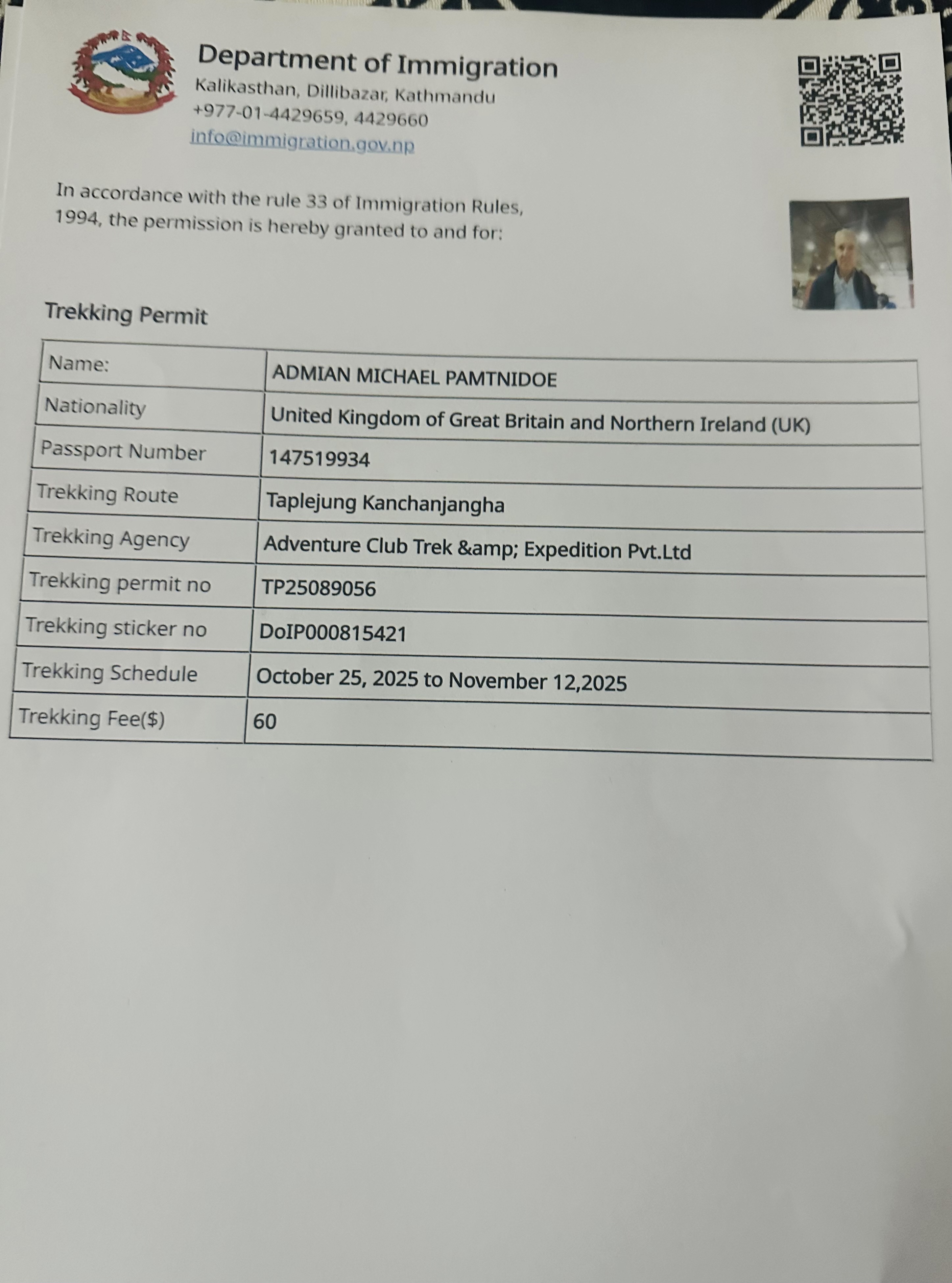
How Difficult Is the Kanchenjunga Base Camp Trek?
The Kanchenjunga North Base Camp Trek is widely regarded as one of the more challenging treks in Nepal, mainly due to its remote location, high altitude, and demanding terrain. Reaching elevations up to 5,143 meters at Pangpema, the trail demands a solid level of physical fitness, careful acclimatization, and thorough preparation for harsh and unpredictable mountain conditions.
Several key factors contribute to its difficulty:
High Altitude: The trek reaches significant elevations where the risk of altitude sickness becomes a serious concern.
Rugged Terrain: Expect steep ascents, rocky trails, narrow ridgelines, and even icy sections, all of which require stamina and careful footing.
Remote Location: The trail passes through isolated regions with limited access to amenities or medical facilities, meaning self-sufficiency and advanced planning are essential.
Unpredictable Weather: Weather in the eastern Himalayas can change rapidly, so layered clothing and proper gear are crucial.
Long Duration: The trek usually takes 15 to 20 days, requiring sustained physical effort over many days in remote high-altitude terrain.
How Much Does the Kanchenjunga Base Camp Trek Cost?
The Kanchenjunga Base Camp Trek typically costs between $2,179 and $2,789 per person, depending on factors like the route you choose, the trek’s duration, group size, and the services included in your package. Longer treks, such as the full Kanchenjunga Circuit, are naturally more expensive due to additional days on the trail. Your trekking style also affects the cost—lodge-based treks tend to be pricier than camping treks, which offer fewer amenities but may be more budget-friendly. Trekking with a group can significantly reduce the per-person price, making it a popular option for those looking to lower expenses.
Key Factors That Influence the Kanchenjunga Trek Cost
Several other elements contribute to the total cost of your trek. Permits are mandatory in this restricted region, including both the Restricted Area Permit and the Kanchenjunga Conservation Area Permit. Hiring a licensed guide (typically $30–$35/day) and porter ($25–$28/day) adds to the expense but greatly enhances safety and comfort. Transportation is another factor—flights to and from Bhadrapur, plus local jeep transfers, are often included in the package price. The time of year you choose to trek also matters, as peak seasons (spring and autumn) may come with slightly higher costs. Lastly, don’t forget to account for personal expenses, such as snacks, drinks, gear rentals, and tips for your support staff.
Best Time to Trek Kanchenjunga Base Camp
The best time to trek to Kanchenjunga Base Camp is during the spring (March to May) and autumn (September to November) seasons. These months offer the most favorable trekking conditions—stable weather, clear skies, and moderate temperatures—which are essential for safety, comfort, and breathtaking Himalayan views. In spring, the trails come alive with blooming rhododendrons and wildflowers, enhancing the scenic beauty of the forests and hillsides. Autumn, on the other hand, is known for its crisp air, excellent visibility, and cultural richness, as many of Nepal’s biggest festivals fall within this period, offering trekkers a chance to immerse themselves in local traditions.
When to Avoid the Kanchenjunga Trek
While spring and autumn are ideal, summer (June to August) and winter (December to February) are less suitable due to harsh weather conditions. The summer monsoon brings heavy rainfall, making the trails muddy and slippery and causing landslides, and there will be less visibility due to thick cloud cover. In winter, extreme cold and heavy snowfall can block high-altitude trails and make trekking dangerous, especially in remote areas with limited infrastructure. For the safest and most enjoyable experience, it's best to plan your Kanchenjunga trek in the peak seasons of spring or autumn.

